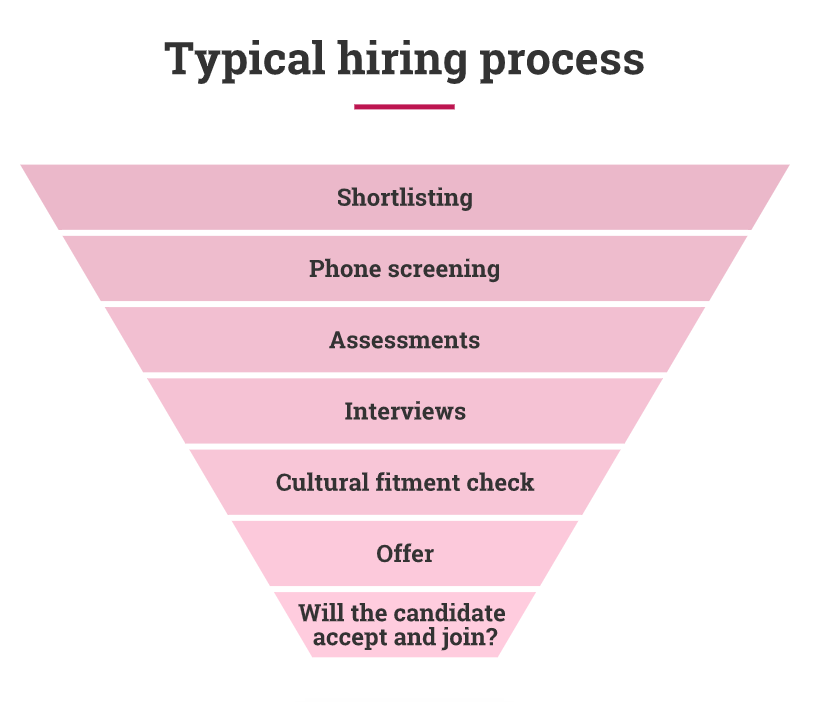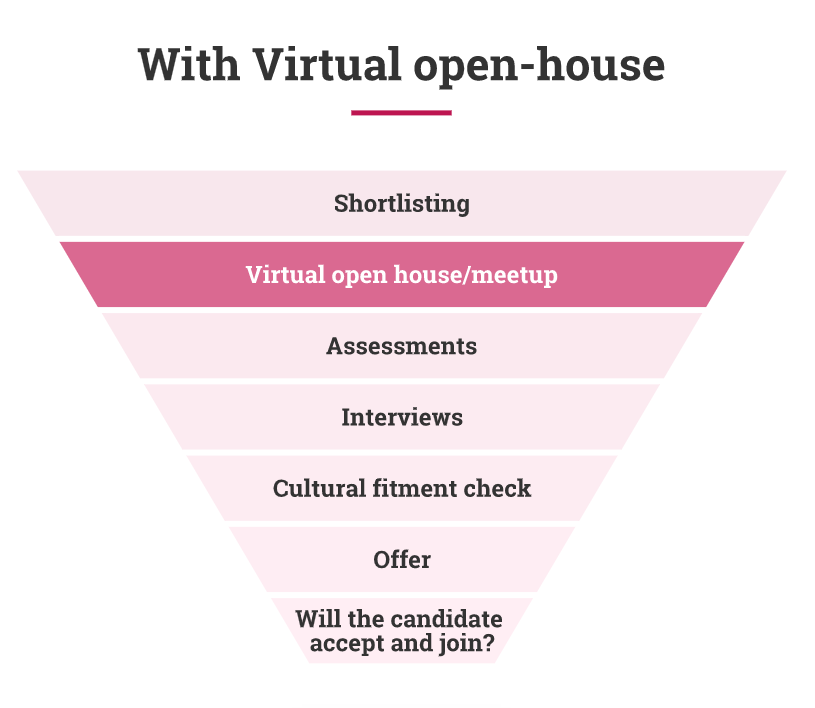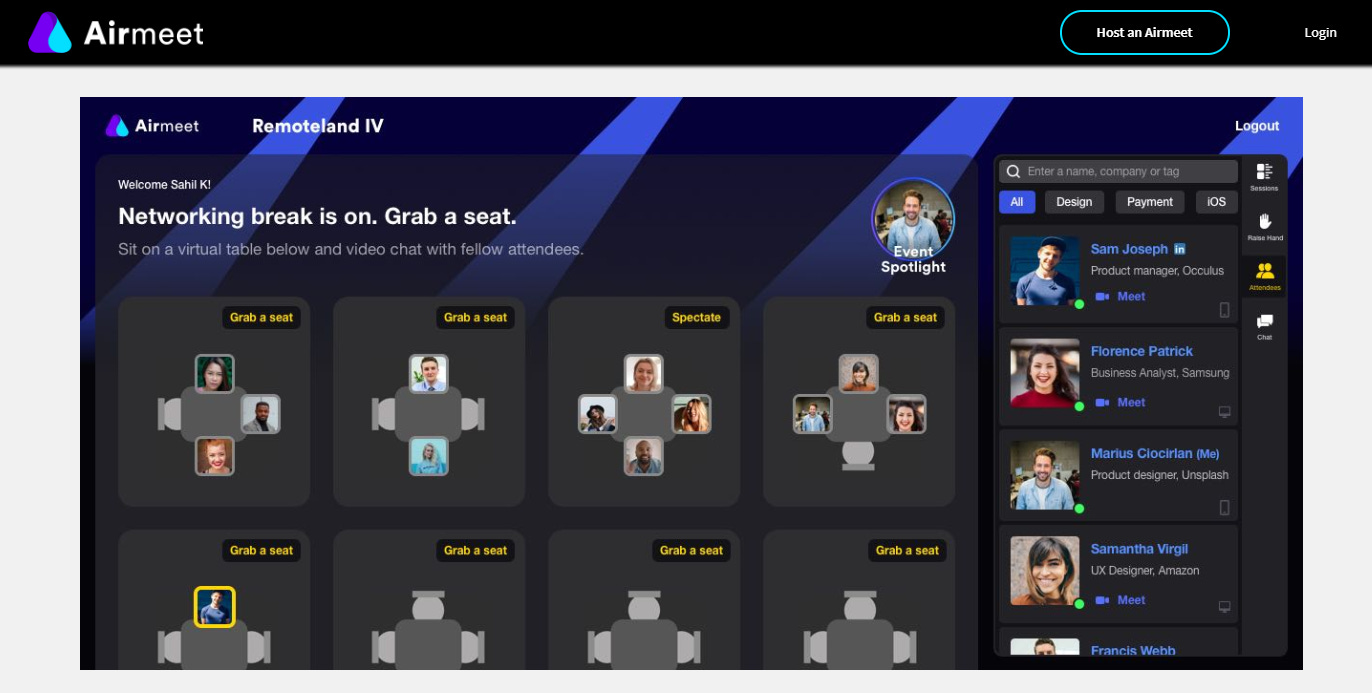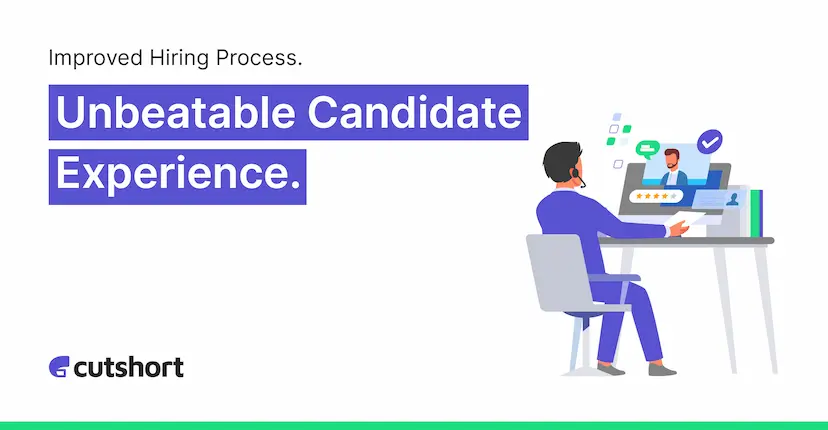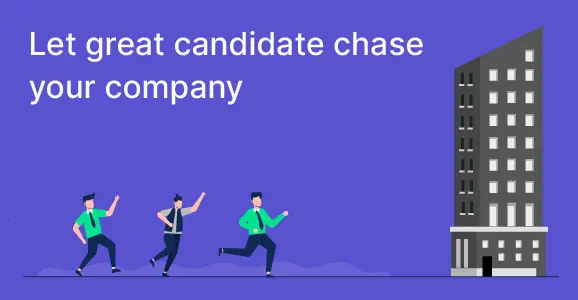I’ve been intending to write about this for 6 weeks. Given the high impact we have seen with this approach, this delay makes me feel a bit guity.
Before diving into it, let me emphasize – you really got to actually try it out to see the benefits of the suggestion I’m going to make in this post.
Okay, let’s begin with the familiar stuff first.
The following picture describes the hiring process most companies follow:
And of course, we all know the issues at each step of this hiring process:
- We need to reject a lot of folks in the shortlisting stage: We are often forced to reject aggressively here since the next step (“phone screening”) can take at least 15-20 mins per candidate, which is not viable. Result – rejection of the candidates who seem to lack something. For instance, someone coming from an unrelated industry, a lesser known college, an uncommon job function and so on.
- Difficulty in effectively judging someone in a phone screening stage: With around 30 minutes of time per candidate, this step is time consuming and also ineffective in really understanding the candidates due to the formality of this call.
- Assessment tests and interviews are time consuming for both parties: Quite exhaustive steps that take a lot of time of everyone – yours, the candidates’ and your teams.
- Cultural fitment stage is based on too few data points: This step is often done by a senior HR or a leadership executive who has never spoken to the candidate before. This step is inherently subjective and also since it is coming after so many costly steps, it largely becomes an exercise to catch any red flags.
- Uncertainty in the offer and post offer stage: We all should be happy here but we seldom are. The ball is in the candidate’s court now and it’s hard to know if they want your position strongly or were just casually interested in your company.
Here is the small change to try out.
The change is simple:Replace Phone Screening with what could be called as “Virtual Open-house”.
So, what is this Virtual Open House?
Do you remember your campus placements. They usually started with a company’s presentation and then some QnA.
Yeah yeah, some of them were boring.
But what if you could extend this idea and invite the shortlisted candidates directly to a your big office where you could tell them about your company and setup smaller tables to let the candidates interact with you and your team members?
Also read: Your context is unique. So should be your interview process.
If you could do this, you could perhaps invite a much higher number of candidates for this interaction. See what questions they have about your role/company. May be toss some interesting discussions around their career goals or their job function and see who really stands out?
Of course, in a physical world, doing such events would have been impractical. Very few candidates would actually travel to your office without any commitments from your side.
This is where the online part becomes useful. A Virtual Open House is like doing this same thing as above, but online. With (currently free!) solutions such as airmeet.com, you could quickly set up your office like environment, set up some tables and invite the candidates who can just join via a link.
We did this experiment and this is how it looked like:
In the above image, you can see the different tables where candidates could sit and interact with our team freely.
So what benefits this Virtual Open House can get for you?
The amazing part here is that although this is one step at the start of the hiring funnel, it improves all the subsequent hiring steps in a significant way:
- You can now shortlist more people, since you can now handle many candidates in the next round. This lets you discover hidden talent more easily.
- Unlike Phone screening, which is a formal conversation, an Open House is more casual and helps you understand the true motivations of the candidates better. Bonus: Understanding your target candidates is great since you can adapt your hiring process continuously to get more of them in the future.
- Since the interactions are in a group setting, you can also witness the social skills of the candidates. It’s unbelievable that all of us work in teams but very few companies check for skills like listening, reasoning, articulation, communication with their peer group.
- Since you and your team are now able to interact freely, there is more information available to both sides on the cultural fitment aspect. The candidate can interact with your team members and can decide better if they feel like belonging in your team. If they do, you can expect a higher offer acceptance ratio and a much higher joining ratio.
- Unlike the conventional process where you reject a large number of candidates rather coldly, the Virtual Open House helps you create a positive employer brand even if you drop the candidates after it. Such candidates are likely to apply again or refer more of their friends who they think are more relevant to your company.
Liked it but not sure if it will really work?
Well, we ourselves have hired 3 awesome folks in our team that we most likely won’t have been able to identify without this method. Plus, we met many other good candidates who we couldn’t fit at this time but who will stay in touch and might become a fit in the future sometime.
Want to do this and want to discuss it? I’d be happy to help!
Also read: 3 learnings from the diary of a modern-day recruiter
Get such recruiting tips in your inbox!
This post is a part of our The Modern Recruiter initiative to help hire better in 2020 and beyond.
To receive emails when a new post is available in this series, please subscribe here:



